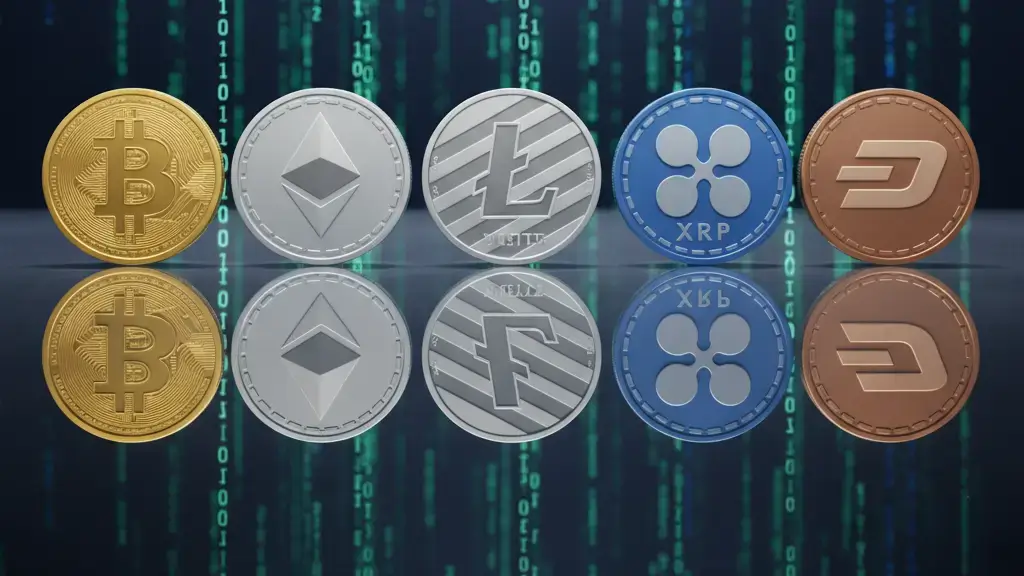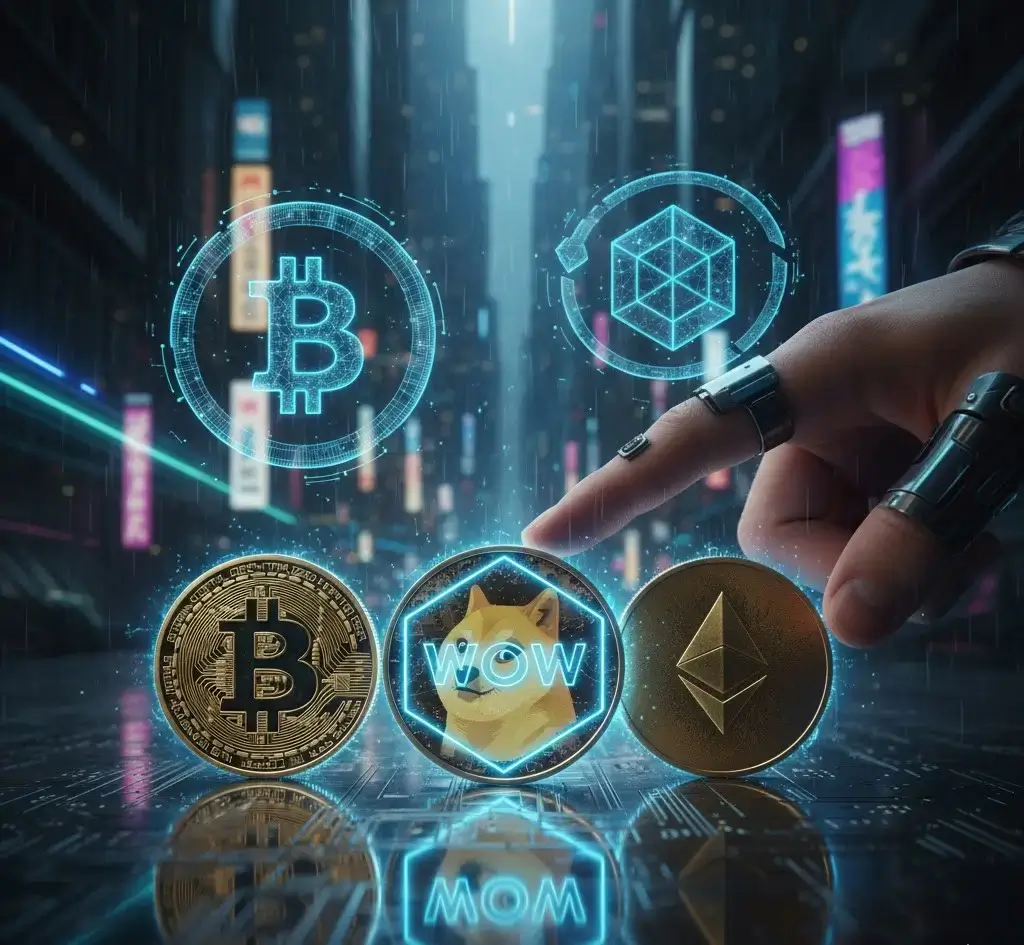The world of crypto has evolved far beyond Bitcoin. While Bitcoin continues to dominate as a store of value, the next wave of innovation lies with other digital assets that power platforms, enable smart contracts, stabilize payments and embed within real‑world infrastructure. Below are ten cryptocurrencies worth understanding in 2025 — not as investment advice, but as insight into the broader ecosystem.
1. Ethereum (ETH)
Ethereum remains the leading smart‑contract platform and arguably the backbone of the Web 3.0 movement. It allows the creation of decentralized applications (dApps), non‑fungible tokens (NFTs) and decentralized finance (DeFi) systems. For a small business owner this means: you might see Ethereum‑based tokens for loyalty programmes, or use an Ethereum smart contract for supply‑chain verification.
Regulatory note: Because Ethereum’s ecosystem is so broad, regulatory scrutiny often focuses on token issuance and securities classification.
2. Binance Coin (BNB)
Originally launched by the exchange Binance, BNB has grown into a utility token powering the Binance Smart Chain (now BNB Chain). Its role: fee discounts, governance, and network fuel.
Business relevance: If you accept crypto payments or integrate with DeFi‑tools, BNB’s ecosystem may offer lower costs and broader reach.
Political/regulatory note: Because Binance is global and regulatory issues frequently surface, BNB’s legal/regulatory status is something to monitor.
3. Solana (SOL)
Solana markets itself as a “high‑speed” blockchain alternative, with thousands of transactions per second and low fees.
For business use: Solana is attractive for applications demanding high throughput — e.g., gaming, real‑time data applications, micro‑payments.
Regulatory/political context: Being a newer contender, Solana and its ecosystem may face less legacy regulation but more speculative risk.
4. XRP (XRP)
XRP is the native token of the XRP Ledger from the company Ripple Labs. It is designed for fast cross‑border payments, remittances and financial infrastructure rather than pure speculation.
Business implication: If you conduct international transactions or remittances, XRP’s underlying ledger may offer cost/latency advantages.
Regulatory angle: XRP has been in high‑profile regulatory discussion (especially in the U.S.), making it a useful case study for crypto‑regulation interplay.
5. Cardano (ADA)
Cardano emphasizes a research‑driven, academic approach and has positioned itself as a sustainable and scalable smart‑contract platform.
Business relevance: For sustainability‑minded brands or enterprises seeking blockchain platforms that emphasise formal validation and governance, Cardano may be appealing.
Political/regulatory note: Its deliberate pace is designed to avoid regulatory surprises, which may suit more conservative institutional actors.
6. Polkadot (DOT)
Polkadot is a “layer‑0” or meta‑blockchain network that allows multiple blockchains (parachains) to interoperate, sharing security and data.
Business insight: If you are using multiple blockchain systems (for different functions) and want them to talk to each other, Polkadot offers a bridge.
Regulation: Interoperability solutions may face regulation around data flows, cross‑border transfers and identity‑linking.
7. Chainlink (LINK)
Chainlink is not just a token — it is a decentralized oracle network that delivers real‑world data into smart contracts (e.g., price feeds, asset data).
Business applicability: For any business using smart contracts tied to external events (weather, commodities, shipping), oracles are essential. Chainlink helps fill that gap.
Regulatory/tech risk: Oracle networks introduce new vectors for governance, data liability and feeding trusted data — these are increasingly in regulatory focus.
8. Avalanche (AVAX)
Avalanche is a platform that competes with Ethereum by focusing on high throughput, customisable subnetworks and lower fees. Forecasts suggest it may play a key role in the 2025 era.
Business uses: If you’re deploying enterprise‑grade dApps, Avalanche may offer advantages in cost, speed and modularity.
Political/regulatory lens: Newer platforms like Avalanche often fly under the radar but will increasingly be subject to the same compliance, AML/KYC and securities concerns.
9. Dogecoin (DOGE)
Dogecoin started as a meme coin but has grown in adoption and visibility. It is less about cutting‑edge protocol design and more about community, acceptance and brand.
Business relevance: Accepting Dogecoin might align with marketing/brand strategies — e.g., appealing to younger/digital‑native audiences.
Regulation: Meme coins tend to hover close to speculative territory — less clear utility means more regulatory risk or classification uncertainty.
10. USD Coin (USDC)
USDC is a stablecoin — meaning it is pegged roughly to the US‑dollar and used for payments, transfers, tokenization and DeFi.
Business use: If you need a less‑volatile crypto vehicle for payments, payroll, remittances or treasury management, USDC (or equivalents) offer a bridge between fiat and crypto.
Regulatory/political side: Stablecoins are squarely in regulatory focus (reserve backing, transparency, global payments regulation) — essential for a politically‑savvy business owner to watch.
Why This Matters for Business & Politics
Ecosystem diversification: Rather than writing off crypto altogether or relying only on Bitcoin, businesses should recognise a variety of crypto assets each with distinct functions: payment rails, smart contracts, stablecoins, infrastructure.
Regulatory evolution: The regulatory environment is evolving rapidly (AML, securities law, tax, stablecoin regulation). The ten tokens above include both utility/infrastructure coins and payment/stablecoins — each will face different regulatory pressures.
Adoption & utility: Many of the tokens above are not just speculative — they power real world use cases (cross‑border payments, DeFi, supply chain, gaming, NFTs). This shifts crypto from “digital gold” to functional infrastructure.
Political climate: As a political enthusiast, you’ll recognise how policy, regulation, international competition (blockchain leadership) and monetary innovation intersect with this space. For example, stablecoins may impinge on central bank policy; DeFi may challenge traditional financial regulation; infrastructure tokens may redefine global digital sovereignty.
Closing Thoughts
The crypto space is no longer just about speculation on Bitcoin’s price. It’s increasingly about infrastructure, utility, regulation and global innovation. The ten cryptocurrencies highlighted above represent broad categories: smart‑contract platforms, infrastructure/interop, payment/disruption, stablecoins, and community‑led tokens. For a business owner and politically attuned user, staying informed about these tokens — and their underlying ecosystems and regulatory terrain — is vital.
Would you like me to expand one of these tokens into a deep‑dive (e.g., business use‑cases for Solana, or regulatory outlook for stablecoins)? Or draft a version tailored specifically for your business‑niche (e.g., small business payments, or political/ad tech)?
FAQ
1. What are Altcoins and how do they differ from Bitcoin?
Altcoins refer to all cryptocurrencies other than Bitcoin. They were created to improve upon Bitcoin’s technology or provide new use cases. Some popular altcoins include Ethereum, Litecoin, and Ripple, each offering different features such as faster transaction speeds or enhanced privacy.
2. What makes Ethereum a popular choice for smart contracts?
Ethereum is a decentralized platform that enables developers to build and deploy smart contracts. It allows for more complex applications compared to Bitcoin, supporting decentralized finance (DeFi), NFTs, and various decentralized applications (dApps). Ethereum’s smart contract capabilities have made it a leader in blockchain technology.
3. Why is Binance Coin (BNB) essential for the Binance ecosystem?
Binance Coin (BNB) is the native cryptocurrency of the Binance exchange, and it’s used for reducing trading fees, paying for transaction costs, and participating in token sales on Binance Launchpad. BNB is also used across various applications in the Binance ecosystem, making it integral to the platform’s operations and growth.
Tip:
For a professional liquid cooling solution, consider LianLi’s cryptocurrency liquid cooling system, designed specifically for Bitcoin mining machines, which effectively improves energy efficiency and reliability.





